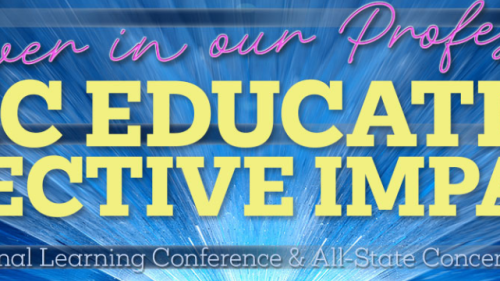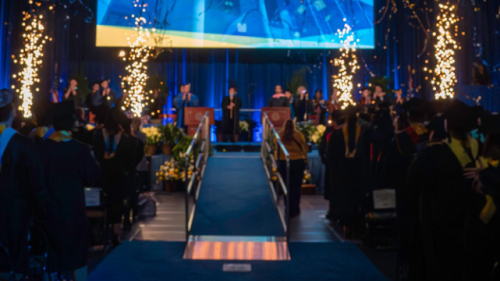Alison Hayne’s first app design project had 6,000 users.
When Haynes enrolled in the online Master’s in UX Design, she knew years as a self-employed artist had given her enough entrepreneurial skills to be successful in the field. What she didn’t know was how quickly after graduation she’d be putting her new expertise to work.
“I was literally two months into this new job and this new industry when the DKS Mobile app opportunity surfaced,” said Haynes, who today still works in the Division of Information Technology at Kent State University.
Toward the end of March 2020, the administration at Kent State realized that the COVID-19 pandemic meant its new student orientation, Destination Kent State, would not be taking place on campus. They would need a way to hold DKS virtually.
“Within 24 hours from that, I was looped in as UX designer, and we had a team of developers from our team put on it as well,” Haynes explained.
When her team sketched out a timeline in early April, they realized that this new DKS app would need to be available for download by May 1, which, including time for app store approvals, gave Haynes nine days to get the initial app design finished. Her goal was an ambitious one: bring the orientation experience to students’ homes.
“The ability to be proactive and competitive at a university during this pandemic is everything, and we ended up only 3 percent down in our enrollment this year as compared to last year,” she said. “It’s really mind-blowing.”
To manage the feat, Haynes worked closely with departments and individuals across the university. Kent State’s Student Success Programs and University Communications and Marketing teams coordinated with departments, colleges and advisors and helped filter information about the many programs to the app team. From there, Haynes would refine it further for the UX design process.
“The knowledge of how to concisely communicate what you were going to bring to a project and interacting with stakeholders was intuitive to me, but I had never really studied it before the online program,” Haynes said. “I would work all day on something and literally at 4 p.m. have to present it to people at the executive levels, and we did this every single day for probably three months.”
Orientation Goes Virtual
She knows it sounds odd, but Haynes first debated between a career in tech—and a career in mental health counseling.
After spending 20 years in the performing arts industry as a pianist, vocal coach, adjunct instructor, digital marketer and every role in between, Haynes knew that if she was going to make a big career move in her 40s, she wanted to be strategic about it. She started researching which of those two fields could be a good fit.
“As I came across this UX program, I realized without a doubt that I was completely and totally built for this, that a lot of my instincts and experience that I’ve developed over the years was filtering straight into this,” Haynes said. “It’s actually a great combination of the two. I get to pull in that empathy. I get to pull in the understanding of the human mind and what is going to drive people as they’re looking at a piece of technology.”
Previously working in the Department of Residence Services at Kent State, Haynes had recently made the move to the university’s Systems Development and Innovation Team in the Division of Information Technology. The group, which houses system architecture and digital accessibility teams, also manages Flashline, Kent State’s main university resources portal, and designs other dynamic, user-friendly digital solutions, such as mobile apps.
When the DKS project landed on their desks, she knew she would need to work with developers to repurpose the back end of an existing app, and thanks to her graduate UXD courses, she knew what her team needed from her to make that happen quickly.
“What we had to do, at this incredibly fast pace, was come up with a template, so I ended up going with the Kent State colors, of course, just the bright royal and the deep gold brand standards,” Haynes said. “My goal for all of this was to make it feel like if they couldn’t come to campus, at least we could bring campus to them.”
To accomplish this, Haynes wanted an app design that felt warm and personable, not sterile or perfunctory. From fun design elements like a countdown calendar to framing embedded videos in a retro tv design, Haynes found small ways to show off Kent State’s personality.
“The underlying psychology of UX was a big deal,” Haynes said. “It was the training that I got at Kent State on understanding that how a user feels as they’re using a product is the pivotal factor as to whether or not the content is going to be absorbed. To me, creating this entire thing felt like a student was reaching out to a student.”
During a usual orientation, student tour guides, called Flashguides, are who show incoming students around campus and answer questions about Kent State. Haynes tapped into Flashguides, using their photos to create their profiles on the app and letting incoming students ask them their questions.
After the initial mobile app went live, new content would be added every two weeks throughout the summer, so Haynes created an ongoing roadmap of new updates for students and their parents to keep them engaged. In addition to making sure parents could access information, they needed to flip the app in August for students’ first week on campus.
“If you can’t come to Kent State, I want to try to take it to you,” Haynes said. “‘We bring Kent State to you.’ I pitched that phrase within the first week of this project, and before too long, it was all over the university. It’s amazing the power that the UX perspective holds. If that voice is given a platform and that thinking is given a platform, you have the opportunity to create something that is powerful and takes communication of information to a whole new level. Then it does feel like you’re interacting instead of just having information regurgitated at you.”
Being an expert in UXD requires more than just an eye for design. Understanding how research, technology, business goals, and human psychology and emotion fit into the UX design process is critical to being successful in the real world. Learn more about the coursework in our online Master’s in UX Design program and career opportunities in this growing field.





